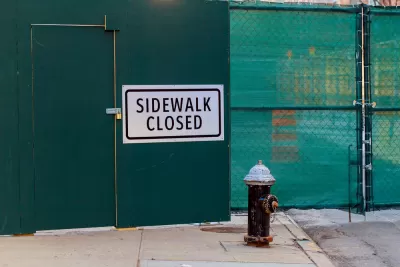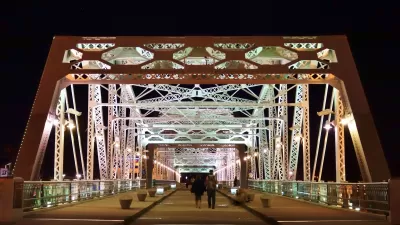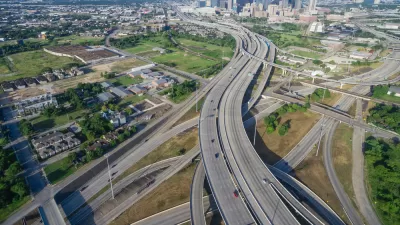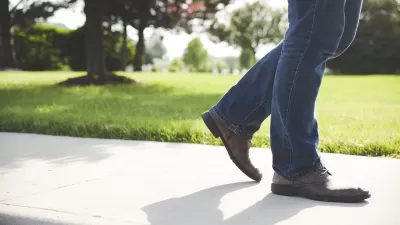In a welcome turnabout of the usual state of affairs, a Philadelphia construction site gives a lane of traffic to pedestrians to make up for the three blocks of sidewalk it's taking.

When buildings need to rope off sidewalks for construction projects, American pedestrians are used to having to walk in the street and dodge traffic. However, during the construction of a three-block-long shopping mall on Philadelphia's Market Street, a lane of traffic is being blocked off and given to pedestrians. "Traffic engineers call such passageways 'cattle chutes,' an unfortunate name for a public amenity that should be required infrastructure in any modern city." Inga Saffron writes for The Philadelphia Inquirer.
City officials tell Saffron, "Not only will the walkway occupy a full traffic lane on Market Street, the sheltered passages will be the most extensive pedestrian safety zone ever created here." This is a wise approach especially in heavily walked neighborhoods were foot traffic is the life blood of many businesses. This particular stretch of sidewalk sits between Philadelphia's historic City Hall and the Independence Mall.
FULL STORY: Giving up a piece of the street for the sake of Philly pedestrians

Trump Administration Could Effectively End Housing Voucher Program
Federal officials are eyeing major cuts to the Section 8 program that helps millions of low-income households pay rent.

Planetizen Federal Action Tracker
A weekly monitor of how Trump’s orders and actions are impacting planners and planning in America.

Ken Jennings Launches Transit Web Series
The Jeopardy champ wants you to ride public transit.

Rebuilding Smarter: How LA County Is Guiding Fire-Ravaged Communities Toward Resilience
Los Angeles County is leading a coordinated effort to help fire-impacted communities rebuild with resilience by providing recovery resources, promoting fire-wise design, and aligning reconstruction with broader sustainability and climate goals.

When Borders Blur: Regional Collaboration in Action
As regional challenges outgrow city boundaries, “When Borders Blur” explores how cross-jurisdictional collaboration can drive smarter, more resilient urban planning, sharing real-world lessons from thriving partnerships across North America.

Philadelphia Is Expanding its Network of Roundabouts
Roundabouts are widely shown to decrease traffic speed, reduce congestion, and improve efficiency.
Urban Design for Planners 1: Software Tools
This six-course series explores essential urban design concepts using open source software and equips planners with the tools they need to participate fully in the urban design process.
Planning for Universal Design
Learn the tools for implementing Universal Design in planning regulations.
Ada County Highway District
Clanton & Associates, Inc.
Jessamine County Fiscal Court
Institute for Housing and Urban Development Studies (IHS)
City of Grandview
Harvard GSD Executive Education
Toledo-Lucas County Plan Commissions
Salt Lake City
NYU Wagner Graduate School of Public Service





























